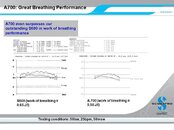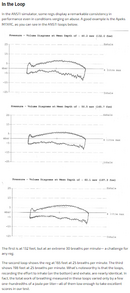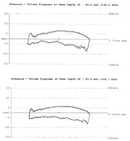Hey Guys,
Now I am in market for a regulator and I'm torn between Apeks MTX-RC and Scubapro MK25 A700/S600.
I dive mostly in the Red Sea and warm water, but I want the easiest regulator with the least WOB and high reliability, money isn't a big issue here.
I emailed Apeks to ask for the WOB of MTX-RC and they relied with the total WOB is 0.9 j/l, without specifying the depth, RMV nor temps.
On the other hand, I found a graph showing the WOB for Scubapro MK25 A700 (0.51 J/l) and MK25 with S600 (0.65 j/l).
Apeks MTX-RC (0.9 J/l) V.S MK25 with S600 (0.65 j/l)
Does a human capable of feeling a difference of (0.25 j/l)?
How would (0.25 j/l) impact comfort or anything?
Should the WOB be part of the process of choosing a regulator at all?
I really don't know which one to go with, I like the look of both (tried none of them) and I can get them both serviced locally.
1_s600_a700: PRECISION CRAFTMANSHIP: A700 REGULATOR. INTRODUCING THE A700: SCUBAPRO’s A700 2 ND STAGE Unique work of art Exceptional breathing performance A regulator. - ppt download
2_Scubadiving_MTX-RC: The Best Scuba Regulators of 2020 Reviewed
Based on experience and knowledge, which one do you recommend?
Now I am in market for a regulator and I'm torn between Apeks MTX-RC and Scubapro MK25 A700/S600.
I dive mostly in the Red Sea and warm water, but I want the easiest regulator with the least WOB and high reliability, money isn't a big issue here.
I emailed Apeks to ask for the WOB of MTX-RC and they relied with the total WOB is 0.9 j/l, without specifying the depth, RMV nor temps.
On the other hand, I found a graph showing the WOB for Scubapro MK25 A700 (0.51 J/l) and MK25 with S600 (0.65 j/l).
Apeks MTX-RC (0.9 J/l) V.S MK25 with S600 (0.65 j/l)
Does a human capable of feeling a difference of (0.25 j/l)?
How would (0.25 j/l) impact comfort or anything?
Should the WOB be part of the process of choosing a regulator at all?
I really don't know which one to go with, I like the look of both (tried none of them) and I can get them both serviced locally.
1_s600_a700: PRECISION CRAFTMANSHIP: A700 REGULATOR. INTRODUCING THE A700: SCUBAPRO’s A700 2 ND STAGE Unique work of art Exceptional breathing performance A regulator. - ppt download
2_Scubadiving_MTX-RC: The Best Scuba Regulators of 2020 Reviewed
Based on experience and knowledge, which one do you recommend?







